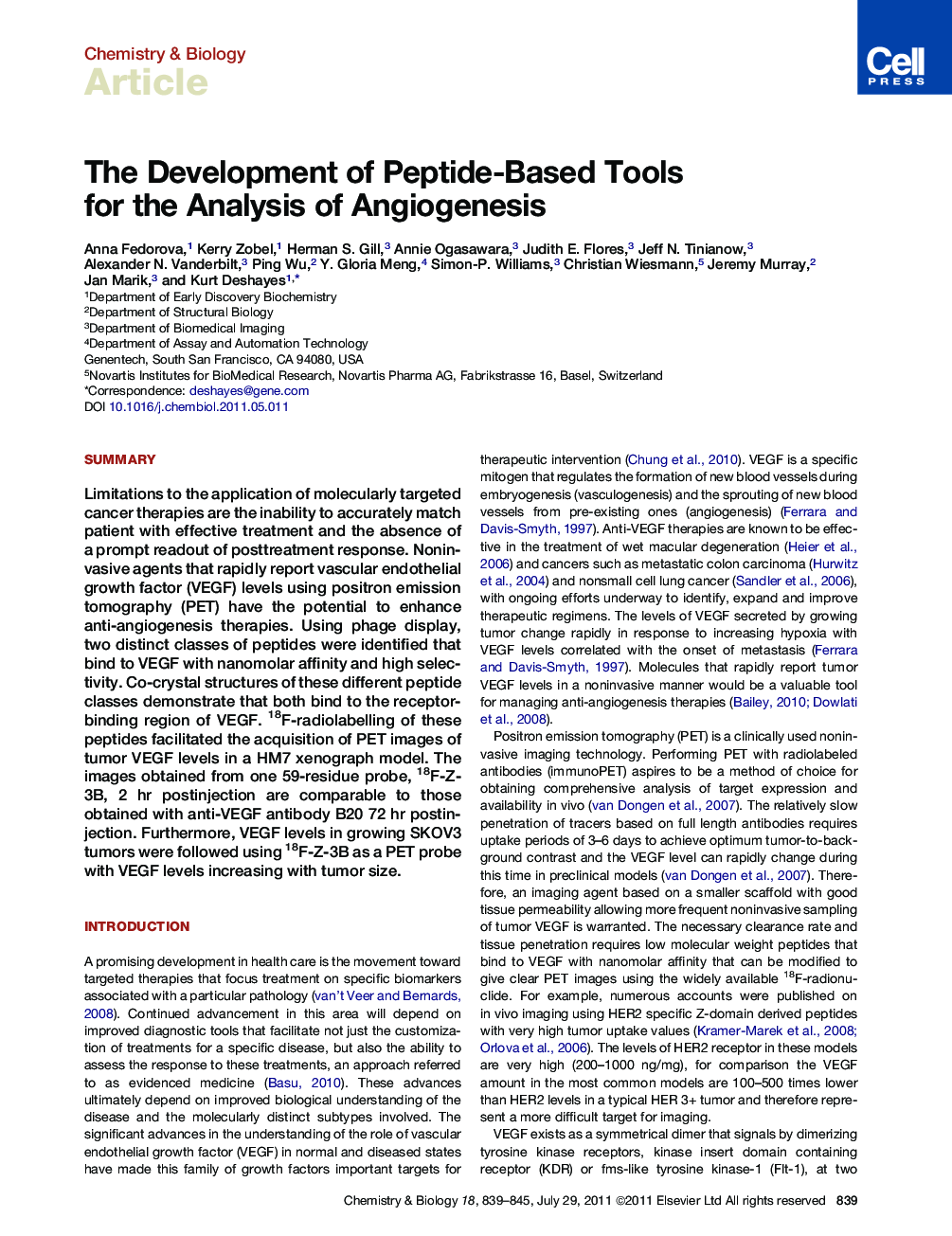| کد مقاله | کد نشریه | سال انتشار | مقاله انگلیسی | نسخه تمام متن |
|---|---|---|---|---|
| 1391935 | 983672 | 2011 | 7 صفحه PDF | دانلود رایگان |

SummaryLimitations to the application of molecularly targeted cancer therapies are the inability to accurately match patient with effective treatment and the absence of a prompt readout of posttreatment response. Noninvasive agents that rapidly report vascular endothelial growth factor (VEGF) levels using positron emission tomography (PET) have the potential to enhance anti-angiogenesis therapies. Using phage display, two distinct classes of peptides were identified that bind to VEGF with nanomolar affinity and high selectivity. Co-crystal structures of these different peptide classes demonstrate that both bind to the receptor-binding region of VEGF. 18F-radiolabelling of these peptides facilitated the acquisition of PET images of tumor VEGF levels in a HM7 xenograph model. The images obtained from one 59-residue probe, 18F-Z-3B, 2 hr postinjection are comparable to those obtained with anti-VEGF antibody B20 72 hr postinjection. Furthermore, VEGF levels in growing SKOV3 tumors were followed using 18F-Z-3B as a PET probe with VEGF levels increasing with tumor size.
Graphical AbstractFigure optionsDownload high-quality image (273 K)Download as PowerPoint slideHighlights
► Peptides were developed that bind to VEGF with nanomolar affinity
► One peptide class contains 59 residues in three helices
► One peptide class contains 38 residues in two helices connected by a disulfide bond
► The two helix peptides recognize VEGF as a homodimer
► Structural insight into the binding of privileged protein scaffolds
► 18F-labeled peptide Z-3B yields PET images in 2 hr comparable to those obtained in 72 hr with 79Zr-labeled anti-VEGF antibody
Journal: - Volume 18, Issue 7, 29 July 2011, Pages 839–845